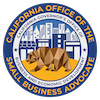How do you define your company’s culture? This is a question that’s asked more and more as today’s workforce changes, reflecting a wide range of values – from political ideals to moral ones. Brad Pollak, a consultant specializing in Management Consulting at the SBDC hosted by Long Beach City College and current business owner, points out that before there’s a culture there must be a clear vision statement.
“The thing most companies fail to do is create a clear vision of what they want. The vision statement is where a company can state its goals and objectives. Once that’s created, the company should treat is as a bible. It will affect everything from customer service to day-to-day activities,” Pollak explains.
EXAMPLES OF VISION INFLUENCING CULTURE
He uses successful companies such as Chik-Fil-A as examples of what it means to operate with a vision, employing this vision throughout the company’s practices.
For example, Chik-Fil-A closes on Sundays in observance of the Sabbath day. Whether or not their employees share the company’s beliefs, they still reap the benefit of having every Sunday off. This is how vision influences culture.
“Imagine going to a doctor’s office. You walk in and are greeted by a receptionist who is friendly, takes your information and gives you a timeframe of when you’ll be seen. She or he might point you toward free beverages while you wait. Overall, this is a positive experience. The doctor’s vision is clear. It’s obviously been communicated the employees. But this is the exception. Most of the time customer service suffers because the owner didn’t take the time to outline clear goals,” Pollak says.
WHERE TO START
So how do you create a vision statement that then will impact your company’s culture and customers? According to Pollak, start by answering a couple simple questions: why does my company exist and where do I see it going?
While creating a vision statement may take some time, it shouldn’t be a long document. In fact, Pollak points out, they’re short and to the point.
“You should be able to sum up your company’s vision in a few sentences. If you can’t do that, then you’re missing a key piece of how to run a successful company,” Pollak states.
Since the core values of your company are at the heart of your vision statement, defining the culture means asking yourself “what are we doing today that aligns with our values?”
If you’re a company that wants to produce a great product while leaving as little of a carbon footprint as possible, you might consider allowing employees to work from home a few days out of the week, set up rideshares or set up recycling bins throughout the office. This is a clear example of how vision and culture work together to create a business people can understand and support.
TRANSLATING VISION INTO CULTURE
It all begins with solid leadership. Finding effective leaders who understand your vision is key in implementing a culture that reflects your vision. Pollak explains that if your managers don’t understand your vision, then it’s likely your product and service will suffer. Once you have great leaders in place, it’s their job to communicate the vision with the rest of the team and then help implement policies that mirror those values. The more clearly these ideals are understood, the easier it will be to hire and attract talent who shares these ideals.
If you’re a company who encourages collaboration and you have a candidate who prefers working alone, then you have a misalignment of values right from the start. While this candidate might have a great portfolio, at the end of the day he or she doesn’t possess the qualities you need to realize your vision.
Ready to get started on defining your business’ vision and create a culture that you can be proud of? Here are some examples of successful companies’ vision statement to help get you going.
- Microsoft: “Create experiences that combine the magic of software with the power of Internet services across a world of devices.”
- ASPCA: “That the United States is a humane community in which all animals are treated with respect and kindness.”
- Smithsonian: “Shaping the future by preserving our heritage, discovering new knowledge, and sharing our resources with the world.”
- Ben & Jerry’s: “Making the best possible ice cream, in the nicest possible way”
- Patagonia: “Build the best product, cause no unnecessary harm, use business to inspire and implement solutions to the environmental crisis.”
- Salesforce: “The end of software.”
C ontributing SBDC Consultant: Brad Pollak
ontributing SBDC Consultant: Brad Pollak
Brad specializes in Management Consulting at the SBDC hosted by Long Beach City College and is also a business owner.






